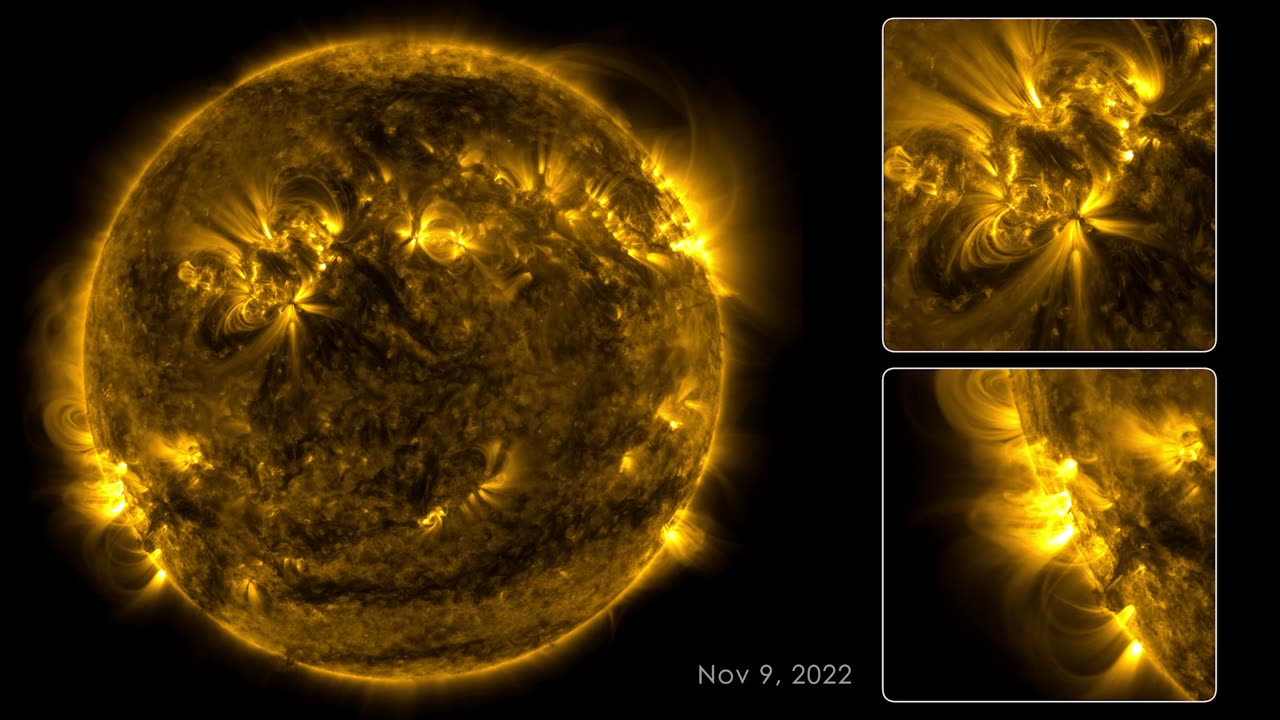Premium Only Content

133 Days on the Sun - Solar System
Solar System
The solar system is a vast and intricate cosmic structure consisting of a star, planets, moons, asteroids, comets, and other celestial objects bound together by gravity. Our solar system is located within the Milky Way galaxy, specifically in one of its spiral arms known as the Orion Arm.
Here are some key facts and a brief description of the major components of the solar system:
Sun (The Star):
The Sun is the central and most massive object in the solar system, accounting for more than 99% of its total mass.
It is a G-type main-sequence star, commonly referred to as a yellow dwarf, and is about 4.6 billion years old.
The Sun's energy is produced through nuclear fusion, primarily converting hydrogen into helium, which emits light and heat.
Planets:
There are eight recognized planets in the solar system, categorized into two main groups: terrestrial planets (inner planets) and gas giants (outer planets).
Terrestrial Planets: Mercury, Venus, Earth, Mars. These planets are relatively small, rocky, and have solid surfaces.
Gas Giants: Jupiter, Saturn, Uranus, Neptune. These planets are much larger and composed mainly of hydrogen and helium, with no solid surface.
Dwarf Planets:
Pluto was formerly classified as the ninth planet but was reclassified as a dwarf planet in 2006 by the International Astronomical Union (IAU). Other notable dwarf planets include Eris, Haumea, Makemake, and Ceres.
Moons (Natural Satellites):
Moons orbit around planets, and some are quite large and geologically active, like Jupiter's moon Io and Saturn's moon Enceladus.
Earth's moon (Luna) is the fifth-largest natural satellite in the solar system and plays a significant role in Earth's tidal processes.
Asteroids and Comets:
Asteroids are rocky objects that orbit the Sun, primarily found in the asteroid belt between Mars and Jupiter.
Comets are icy bodies that often develop a glowing coma and a tail when they approach the Sun. They originate from the Kuiper Belt and the Oort Cloud.
Kuiper Belt and Oort Cloud:
The Kuiper Belt is a region beyond Neptune that contains icy objects, including Pluto and other dwarf planets. The Oort Cloud is a hypothetical region far beyond the Kuiper Belt, believed to contain a vast reservoir of comets.
Orbits and Distances:
The distance between the planets and the Sun varies greatly. Astronomical units (AU) are used to measure these distances, with 1 AU being the average distance between Earth and the Sun (about 93 million miles or 150 million kilometers).
Formation and Evolution:
The solar system likely formed from a giant molecular cloud of gas and dust. The Sun formed at its center, and the remaining material accreted into planets, moons, and other objects over millions of years.
The solar system continues to be a subject of scientific research and exploration, with ongoing missions to study and learn more about its various components and their interactions.
#Solar Observations
#Sun's Activity
#Solar Flares
#Sunspot Cycle
#Solar Dynamics
#Space Weather
#Solar Phenomena
#Solar Science
#Sun's Magnetic Field
#Solar Eruptions
#Solar Exploration
#Sunspot Observations
#Sun's Corona
#Solar Research
#Sunspot Analysis
#Solar Images
#Solar Activity Time-Lapse
#Sun's Surface
#Solar Flare Monitoring
#Sun's Energy
-
 3:47:17
3:47:17
The Pascal Show
16 hours ago $1.05 earnedBREAKING! Mass Shooting At Annunciation Church In Minneapolis Multiple Shot
18K7 -
 LIVE
LIVE
Lofi Girl
2 years agoSynthwave Radio 🌌 - beats to chill/game to
234 watching -
 2:02:49
2:02:49
Inverted World Live
7 hours agoAnnunciation Catholic School Shooting and Spiritual Warfare w/ AK Kamara | Ep. 99
194K23 -
 10:10
10:10
Robbi On The Record
3 days agoHollywood’s Hidden Messages: Predictive Programming & What’s Next
24.5K31 -
 4:43:34
4:43:34
Drew Hernandez
12 hours agoLGBTQ TERRORIST EXECUTES CATHOLIC KIDS IN MINNEAPOLIS
21.8K18 -
 2:17:08
2:17:08
FreshandFit
8 hours ago10 Top Red Pills About American Women
55.8K18 -
 2:10:26
2:10:26
Badlands Media
13 hours agoDevolution Power Hour Ep. 384: Durham’s Blind Spots, Soros Panic, and Trump’s Economic Warfare
71.1K33 -
 3:17:28
3:17:28
TimcastIRL
7 hours agoTrans Shooter Targets Catholic Kids In Mass Shooting, Leftists Reject Prayers | Timcast IRL
234K68 -
 1:31:29
1:31:29
Brandon Gentile
1 day ago25 Year Wall Street INSIDER: $1M Bitcoin Soon Is Just The START
23.4K -
 6:59:13
6:59:13
SpartakusLIVE
9 hours ago#1 Birthday Boy Celebrates with MASSIVE and HUGE 4.8-Hour Stream
63.1K